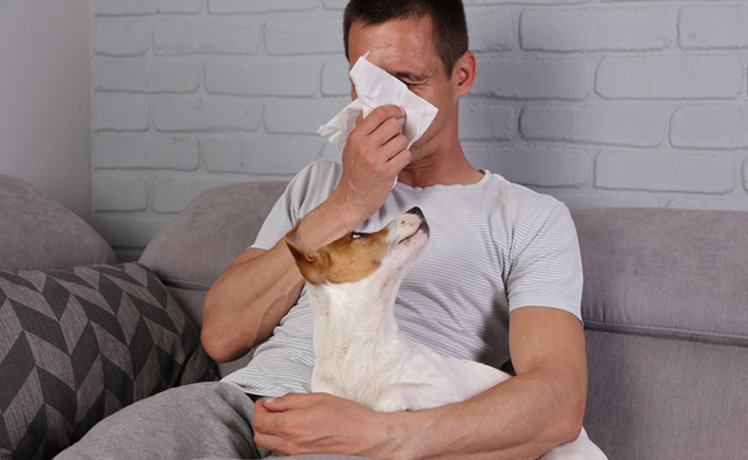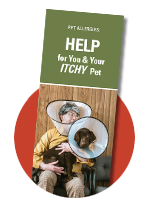
Pet Allergies By The Numbers
Watery eyes? Itchy skin? Sneezing?
No, not you. YOUR PET!
Just like humans, cats and dogs can have allergies to foods, bug bites and more. Here’s what you need to know about common allergies and how you can provide relief to your furry friend.
7 signs your pet might have allergies
1. Wheezing, coughing or snoring
2. Constant itching, chewing and biting paws, tail or rear
3. Frequent vomiting
4. Diarrhea
5. Excessive shedding
6. Swollen paws
7. Open sores, hives or scabs
5 most common pet allergies
- Flea Allergic Dermatitis: This is the most common skin disease in pets, and flea control is often the fastest, easiest way to help an itchy dog or cat. Very few fleas are necessary to trigger severe scratching, lesions, skin inflammation, hair loss and more, and they can exist year-round in your home torturing your poor pet.
- Atopic Dermatitis: This is the second most common skin disease in dogs. This chronic, lifelong condition is associated with allergies and causes inflammation, rash and itchiness. This disease usually shows up within the first 3 years of a pet’s life and symptoms usually get worse over time. It’s brought on by many different allergens and flares up seasonally or year-round. Look for red, raw and itchy skin as well as skin infections, ear infections and hair loss.
- Seasonal Allergies: If your pet only scratches at certain times of the year, odds are your furry friend has a seasonal allergy to pollens, grasses, weeds or trees.
- Food Allergies: Food allergies can develop at any age and over time. In fact, a food that’s been liked and tolerated for years can suddenly make your pet sick. Food allergies are more difficult to diagnose but here are some indicators: your pet has symptoms that aren’t seasonal, often is very itchy around the bottom, has eaten the same food for years or suffers from chronic ear infections.
- Contact Allergies: If your dog or cat itches year-round, your pet may have an environmental allergy reacting to kitty litter, mold and mildew, perfumes or household cleaning products.
4 Ways to Help Your Pet Feel Better
- Choose a high-quality pet foods. If food allergies are suspected, you might need to alter your pet’s diet to soothe symptoms.
- Washing your pet’s bedding. If your pet is suffering from seasonal allergies, it’s a good idea to keep their beds and mats clean to remove possible irritants. Replace beds yearly to minimize pests such as dust mites.
- Bathe your dogs regularly with a mild, soap-free shampoo. If your dog is especially itchy, he may benefit from aloe or oat ingredients.
- See your vet! We can help identify the allergy at hand and recommend treatments or medicines.

